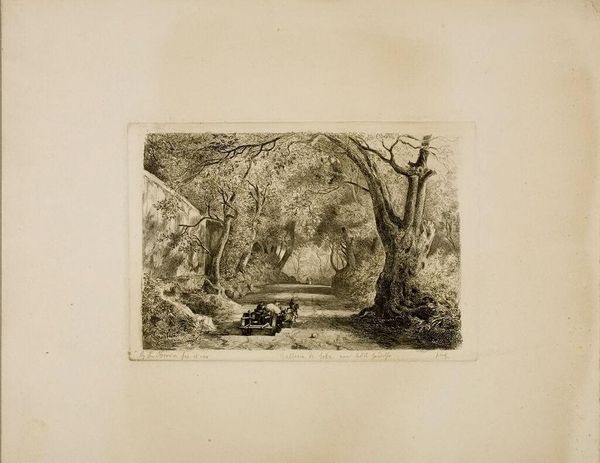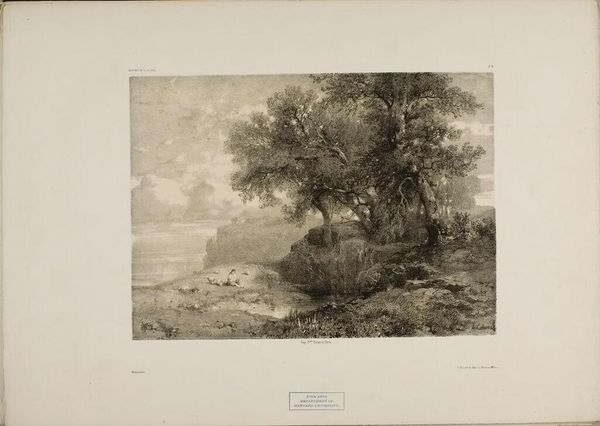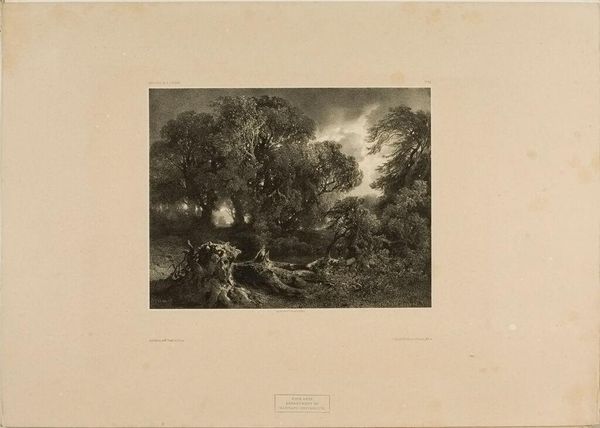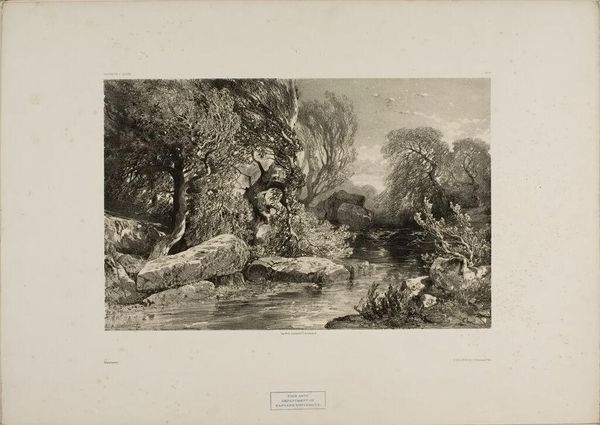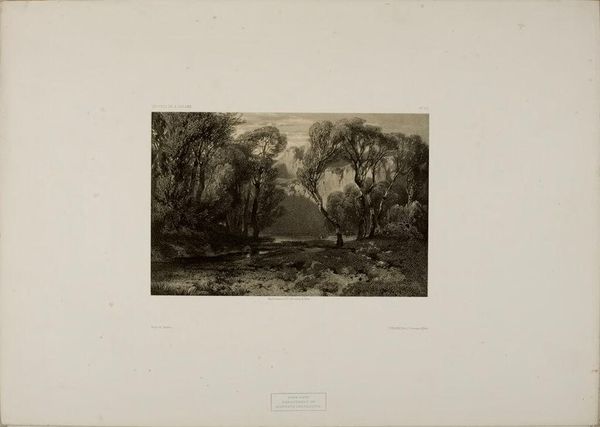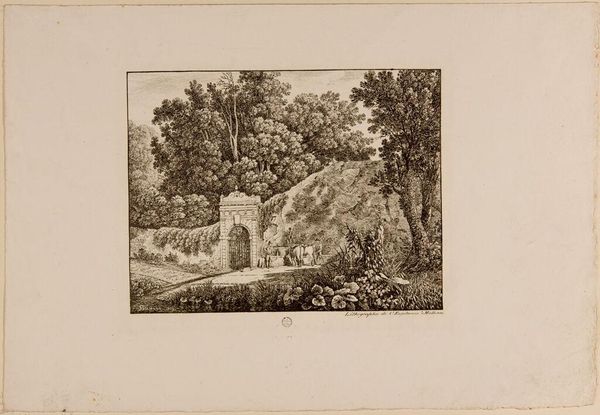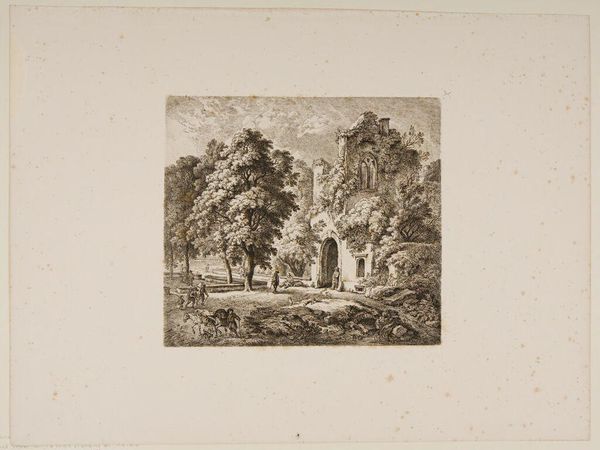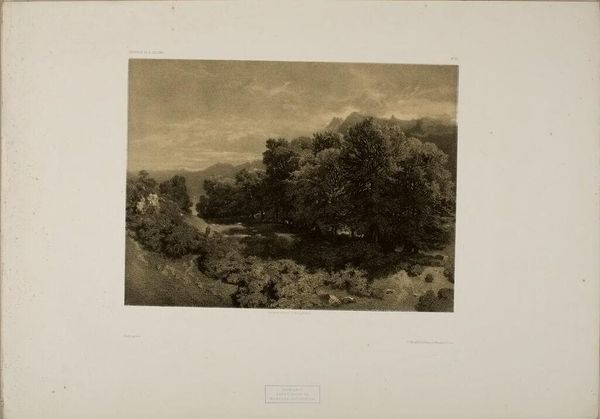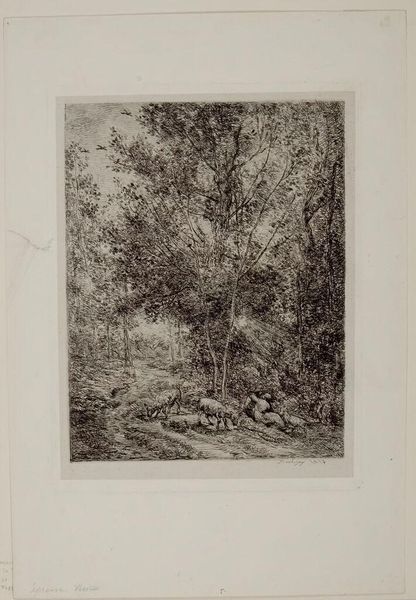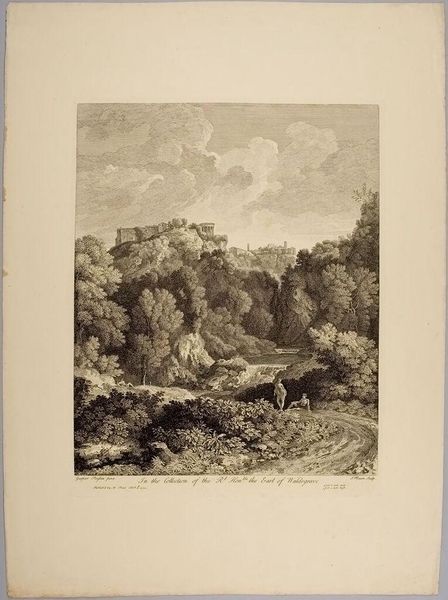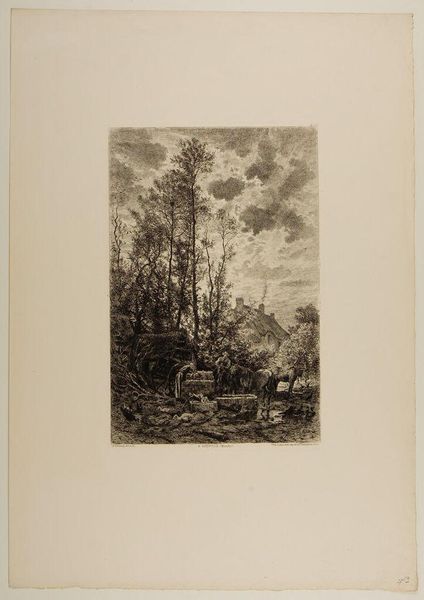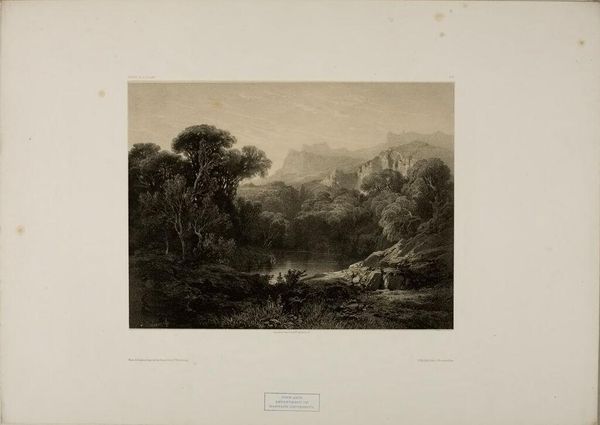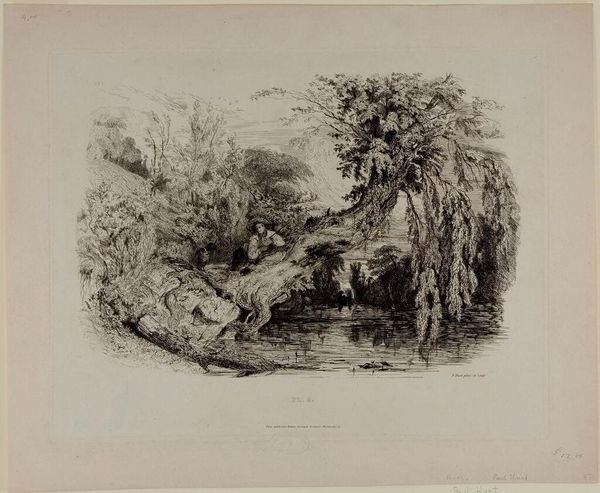
Copyright: CC0 1.0
Editor: Alexandre Calame's "Landscape Number 17" presents a tranquil forest scene. The monochromatic palette evokes a sense of stillness. What's the historical context that shapes our understanding of this landscape? Curator: Calame's work aligns with a rising bourgeois interest in the natural world and the picturesque. His idealized landscapes, exhibited publicly, reinforced notions of national identity linked to the land. How do you see that playing out here? Editor: I can see how the romanticized depiction of the forest might evoke a sense of national pride, by associating beauty and tranquility with a specific place. Curator: Exactly. It's also worth considering how these images circulated – as prints, often – influencing public perceptions of these spaces. They weren't just art; they were tools of cultural construction. Editor: I never thought about landscape art as a tool of cultural construction. I'll definitely be looking at these kinds of works with new eyes now! Curator: Precisely! Art always exists within a broader framework of power and influence.
Comments
No comments
Be the first to comment and join the conversation on the ultimate creative platform.
